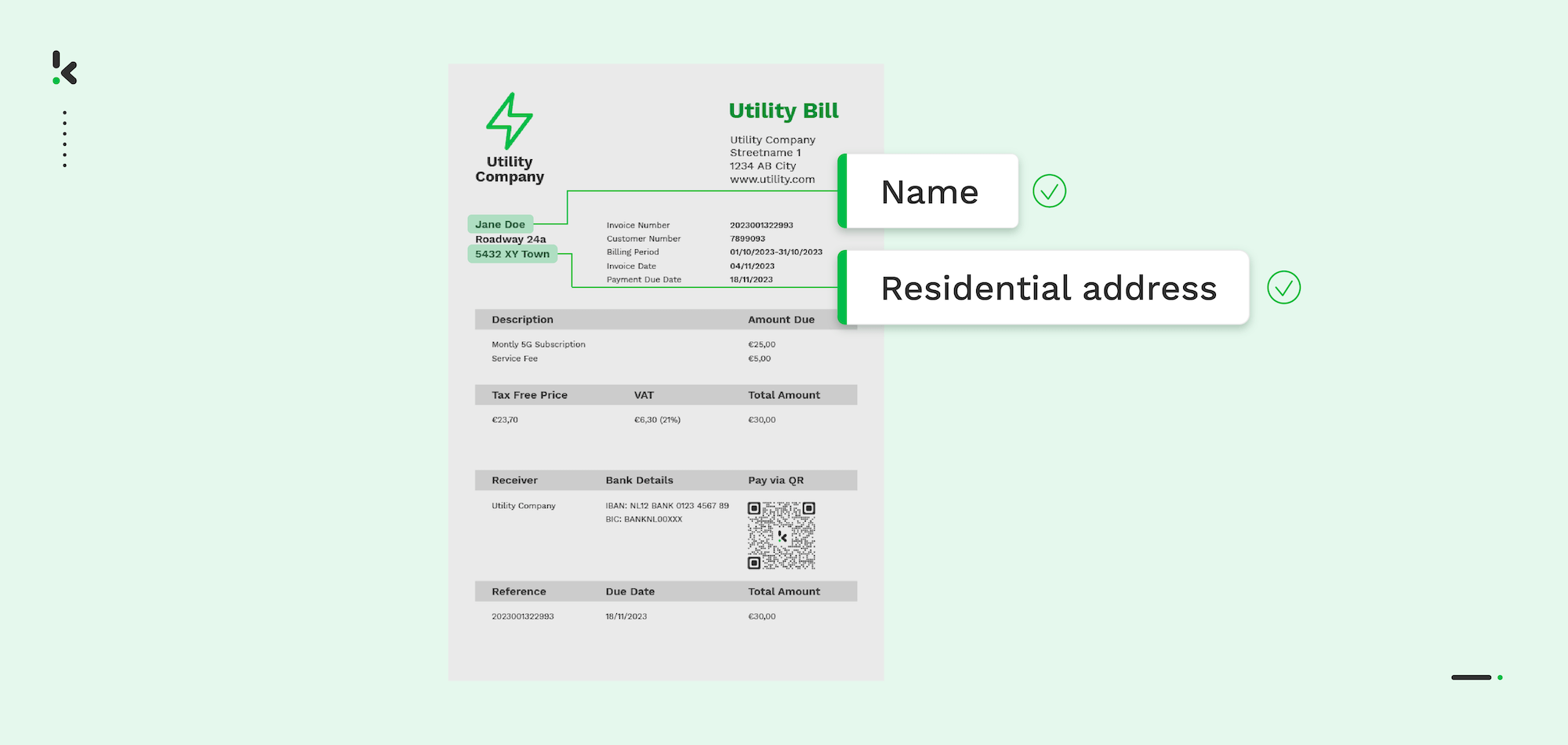

Verifying a person’s identity goes beyond checking a passport or ID card. One essential, but often overlooked, step in this process is proof of address verification. It confirms where someone lives and adds an extra layer of security to customer onboarding, user authentication, and regulatory compliance.
In industries like finance, insurance, real estate, and healthcare, verifying residential addresses is critical to prevent fraud, meet legal obligations, and build trust. As digital processes evolve in 2025, so does the need for fast, accurate, and scalable document verification solutions, making automated address verification more relevant than ever.
In this article, we explain what proof of address is, why it matters, how it’s verified, and how automation can help your business streamline the process.
Key Takeaways
- Proof of address is a key part of verifying someone’s identity, confirming not just who they are, but where they live.
- It’s essential for industries that require KYC and AML compliance, such as finance, insurance, and government.
- Verifying addresses helps prevent fraud, identity theft, and misrepresentation.
- Traditional manual checks are slow and error-prone; automated solutions are faster, more accurate, and scalable.
- Tools like Klippa DocHorizon use AI and OCR to extract, validate, and secure address data in real time.
What Is Proof of Address?
Proof of address (also referred to as proof of residency) is a document that confirms where an individual currently lives. It’s commonly used by businesses, financial institutions, government agencies, and service providers to verify someone’s residential address during onboarding or account creation.
Unlike an ID document, which proves who someone is, proof of address verifies where they live. It serves as an extra layer of identity confirmation and plays a vital role in fraud prevention and legal compliance.
What Documents Count as Proof of Address?
To verify someone’s address, you’ll need a recent, unaltered document issued by a trusted institution. The most common examples include:
- Utility Bills
Water, electricity, gas, or internet bills dated within the last 3 months - Bank Statements or Credit Card Statements
Statements that clearly show the individual’s full name and address - Government Correspondence
Tax letters, voter registration confirmation, or social security documentation - Lease or Rental Agreements
Contracts between landlords and tenants showing residential details
The key is that the document must include both the individual’s name and residential address, and it must be issued by an official or verifiable source.


Why Is Address Verification Important?
Address verification plays a vital role in reducing risk, optimizing internal processes, and building trust with users, all while helping businesses meet regulatory requirements. Here’s why it matters:
- Fraud prevention: Fake addresses are often used to create false identities. Verifying proof of address helps screen out fraudulent users and bad actors before they enter your system.
- Regulatory compliance: Industries like finance, insurance, and telecommunications are subject to strict Know Your Customer (KYC) and Anti-Money Laundering (AML) laws. Verifying a customer’s address is often a legal requirement to meet these standards.
- Enhanced security: By confirming an individual’s address, you reduce the risk of unauthorized access to sensitive services or information.
- Customer trust: Users feel safer sharing information with companies that apply robust verification procedures. This fosters long-term loyalty and reduces churn.
- Operational efficiency: Accurate, verified address data ensures smooth onboarding, fewer manual corrections, and faster customer service.
How Does Proof of Address Verification Work?
Once a user submits a document that includes their residential address, the next step is to verify the authenticity and accuracy of that document. This step ensures that the address is valid, up to date, and truly belongs to the person in question.
Verification methods vary depending on the volume of documents, the level of risk involved, and the technological capabilities of the organization.
Let’s take a closer look at the two most common approaches to verifying proof of address: manual and automated verification.
Manual Verification
Traditionally, teams would visually inspect submitted documents, comparing names, dates, and address details. While workable for small volumes, this method is prone to human error, slow turnaround times, and scalability issues.
Automated Verification
Modern verification tools use AI and Optical Character Recognition (OCR) to extract, analyze, and validate address data from documents in seconds. This method is:
- Faster: Instantly processes large volumes of documents
- More Accurate: Reduces human error and identifies tampering
- Scalable: Suitable for businesses handling hundreds or thousands of verifications
Simplify Proof of Address Verification with Klippa DocHorizon
At Klippa, we help businesses automate and improve identity verification processes—proof of address included. DocHorizon, our intelligent document processing (IDP) platform, combines AI and OCR technology to make address verification fast, secure, and reliable.
With DocHorizon, you get:
- Fraud Detection
Automatically flag altered or invalid documents with tamper detection technology - High Accuracy
Extract data with up to 99% precision, even from scans or photos - Speed and Scalability
Process thousands of documents in parallel with automated workflows - Seamless Integration
Integrate easily into your existing onboarding or KYC workflows - Privacy and Compliance
Stay GDPR-compliant with ISO-certified software, data masking, and secure storage
Whether you’re a fintech, insurer, HR platform, or government agency, Klippa makes proof of address verification seamless.
Want to see how it works? Book a demo via the form below or contact us today.
FAQ
A valid document must include the person’s name and current address and be issued within the past 1–3 months by an official organization (e.g. utility company, bank, or government body).
Can a driver’s license be used as proof of address?
It depends on local regulations. In some jurisdictions, a driver’s license is accepted. In others, only secondary documents like utility bills are valid.
How recent should the document be?
Typically, the document must be dated within the past 90 days to be considered valid.
Is automated verification legally accepted?
Yes. Many KYC/AML-compliant processes now include automated verification. It’s widely adopted in regulated industries, especially when paired with strong data protection measures.
How long does automated verification take with Klippa?
Seconds. With Klippa DocHorizon, the process is nearly instant, even for bulk uploads.